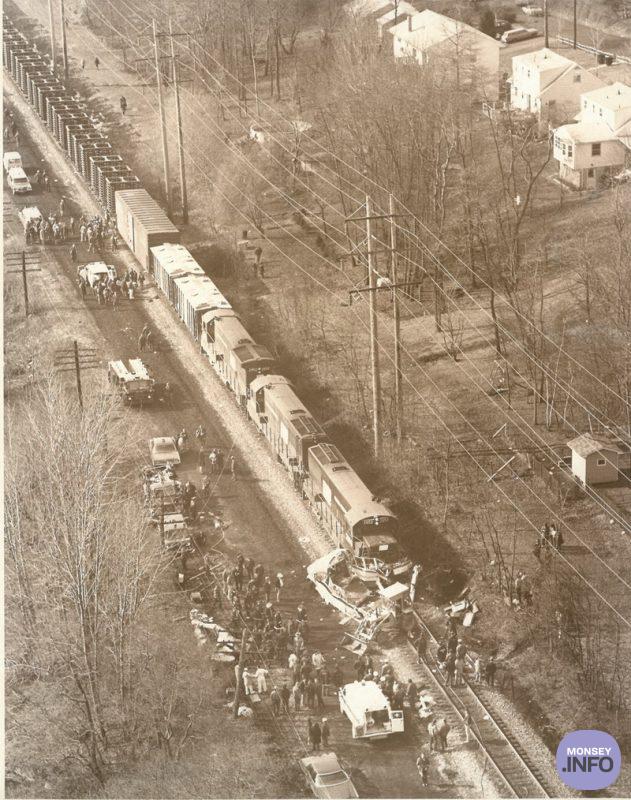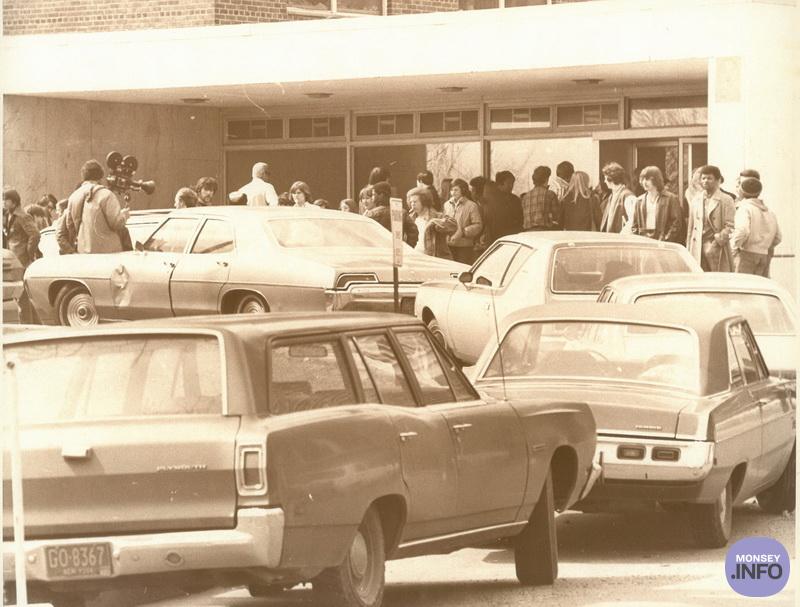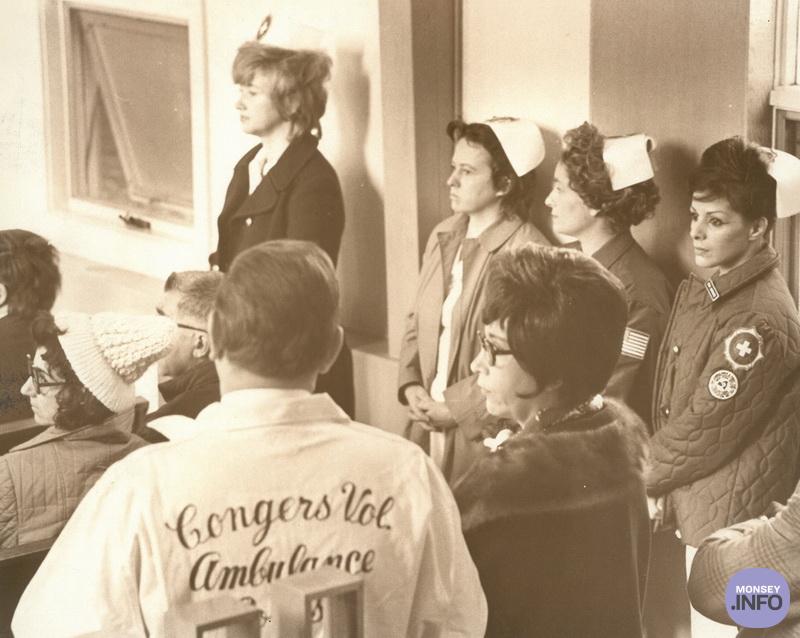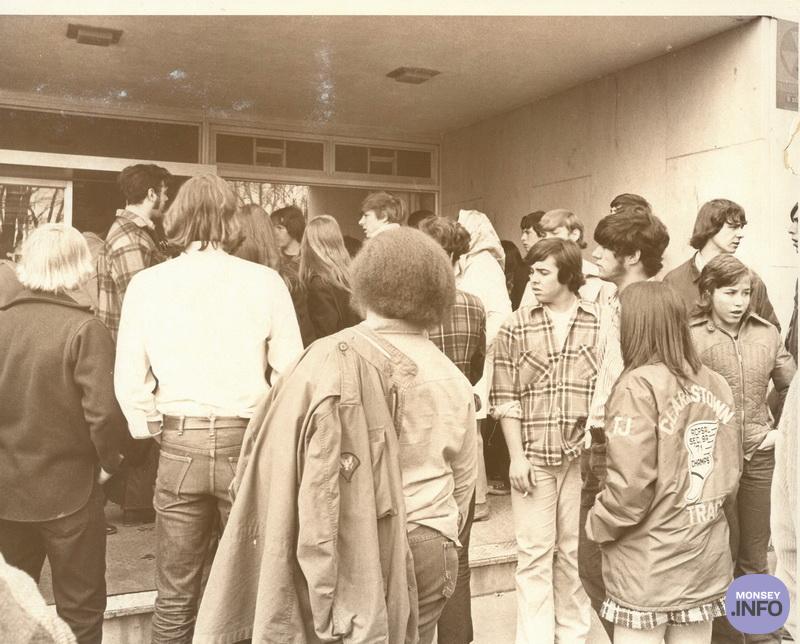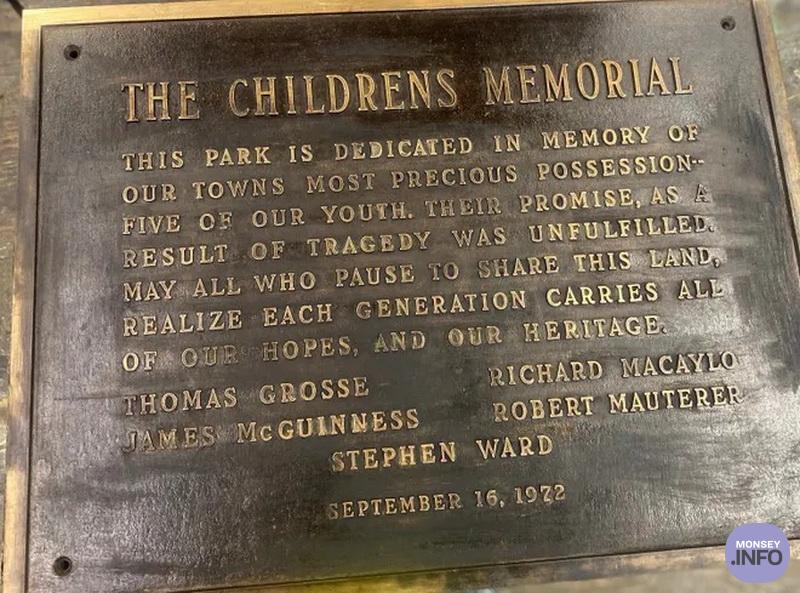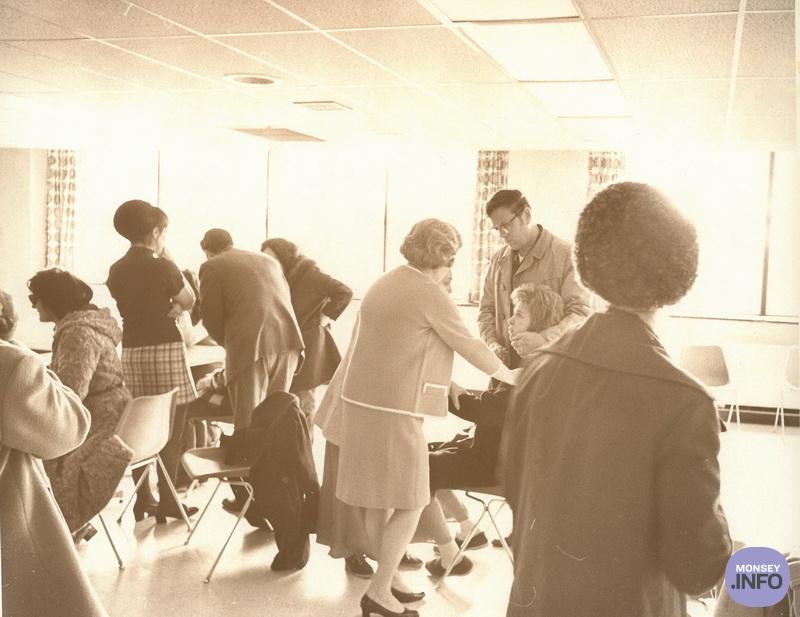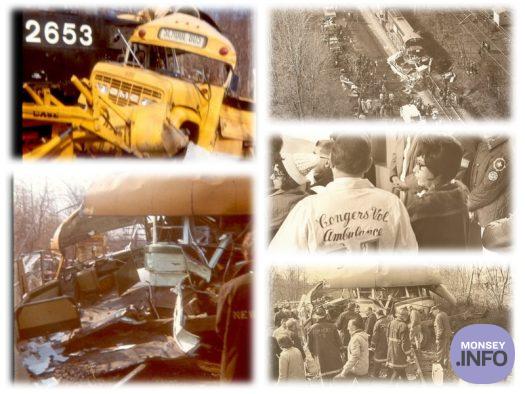
Fifty Years from The Congers Bus and Train Crash That Took The Lives Of Five Teenagers
From Clarkstown Supervisor George Hoehmann
Fifty years ago today, March 24th, our community experienced a horrific tragedy with the Congers bus and train accident.
Five young men; Jimmy, McGuiness, Richard Macaylo, Robert Mauterer, Thomas Grosse and Stephen Ward were killed and forty-five other Nyack High School students were injured, many critically with several losing limbs. On this the 50th Anniversary of that terrible day, the Town of Clarkstown is holding a special memorial service at 11:00am at Congers Memorial Park where a monument stands in memory of the children. We will dedicate a new plaque and hear recollections from a survivor and others about that day. The ceremony will be live streamed on the Town of Clarkstown Facebook page and we are working with a videographer to create a memorial video to honor the victims, survivors and heroic first responders. What follows is an article and summary about the bus crash and its aftermath that will appear in the Rockland County Times today. While it is a bit long it well worth reading and tells the story of profound loss, survival, heroism and endurance. It is our duty as a town to never forget these young people who were taken from us far too early. Please consider joining us for the ceremony either in person which due to the weather will be held inside the Congers Community Center which is adjacent to the monument or via Facebook live on the Town page at 11:00am today.
Friday, March 24, 1972, started off as another typical early spring day in Clarkstown. It was just a week before Easter and the high school winter hockey season had just ended the day before with spring sports about to start. Temperatures in Congers that morning were in the low forties, it was partly cloudy with wind gusts up to fifteen miles per hour. All around Clarkstown, the morning routine had begun for the approximately sixty-two thousand residents. Children were getting ready for school, as parents were making breakfast. Across the town, kids hurried off to the many bus stops and waited for the big yellow school buses to collect the children and safely deposit them at their destinations. Shortly before 7:30am, school bus number 596 serving the Nyack School District began its route from Congers through Valley Cottage picking up students heading to Nyack High School. The driver, thirty-five-year-old Joseph Larkin, a New York City Firefighter making some extra money as a part-time bus driver, was on his daily route as he had done since 1966. The GMC bus snaked its way through the hamlets of Congers and Valley Cottage picking up children. Stop after stop, students boarded the bus taking their normal seats and soon it was filled to near capacity with forty-eight passengers on board including seven who were standing in the aisle.
In 1972, as development continued in the Town, new sewers were in order getting folks off of septic systems. Thus, construction work on the new sewers forced a detour this morning as bus 596 took a different route that made the students and driver Larkin worry that they might be late to school. The bus turned onto Gilchrest Road and made its way into history. It was 7:55am as the bus descended a slight hill bringing it towards the ungated railroad crossing directly into the path of an oncoming Penn Central freight train number 2653. The train was operated by three skilled long term crew members Charles Carpenter, George Gray and John Carey. The train originated in Weehawken, New Jersey at 5:00am that morning with three locomotives pulling 73 cars. It stopped briefly in North Bergen and picked up ten more cars totaling 83 cars and 4,000 tons of steel heading for its final destination in Selkirk, New York. As the train approached the crossing it followed all safety protocols, sounding its horn a quarter mile away and traveling under the thirty-mile per hour maximum speed allowed on this section of track.
Inexplicably, bus 596 did not stop for the crossing and in the words of train staff member George Gray “a flash of yellow appeared” as the bus hurtled in front of the train. While the crew reacted immediately, sounding alarms and throwing the emergency brake, nothing could be done to stop the collision that occurred. George Gray later recalled to a reporter that he, “will never forget the faces of the children framed in the windows of the bus with their mouths open just before the impact.”
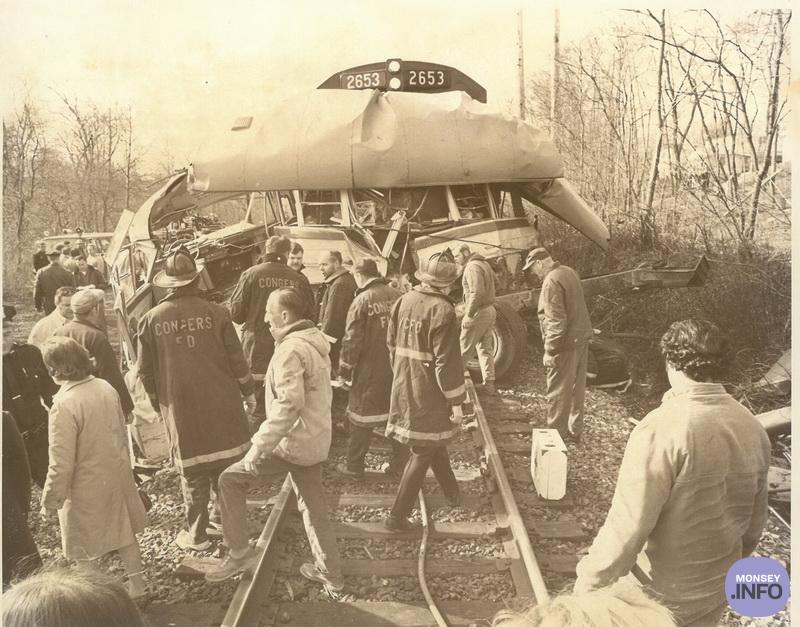
The train tore through the bus cutting it into two with the rear half of the bus thrust aside and dumped closer to the Gilchrest intersection. The front half of the bus was impaled upon the locomotive and pushed over 1,100 feet before coming to a halt. Immediately silence and then mayhem ensued. Nearby on Third Street, lived Joan Fitzgerald, mother of seven and a volunteer trainer and dispatcher for the Congers Volunteer Ambulance Corps who was alerted to the crash by her ten-year-old son John who watched it happen from his upstairs bedroom window. She immediately called the Clarkstown Police and reported the accident, grabbed first aid supplies and ran to the train. She was the first medical personnel on scene. Over the following moments untold acts of bravery and heroism occurred where lives were saved. Quickly, Joan Fitzgerald and soon other first responders arrived on the horrific scene and rendered aid. Tourniquets, bandages and splints were applied and twenty-five ambulances transported the students and driver Larkin to Nyack Hospital. Among the many medical personnel that arrived on the scene that day was Dr. Saul Freedman, who was Chief of Emergency Medicine for Nyack Hospital. He arrived at the Hospital and was told of the accident. He directed three nurses to grab supplies and to get in his car. They raced to the scene, arriving at 8:15am. Freedman, who was a Navy doctor who saw action in the Pacific in WWII, specifically at Okinawa later recalled, “I’ve seen bravery in battle, but none more than here. There was no crying or wailing. Children with smashed pelvises, all but severed limbs, lacerated faces, torn abdomens, concussions, broken backs—they all waited with stoic patience until we could get to them.” Freedman also recalled an exchange he had with one student, Mary Jane LiPuma. According to Freedman, “she had a partial amputation in one leg below the knee and she was all covered with blood from lacerations. Yet when I knelt beside her she managed to say “I am alright. Please take care of my friend.” A later 1978 television movie entitled “Long Journey Back” was made loosely based upon the crash and LiPuma’s struggle to recover.
Sirens wailed as police, fire and ambulance personnel responded from all over the town and county to assist. Upon arrival they witnessed horrific images and performed admirably. Remarkably, within thirty-eight minutes all the students were transported to Nyack Hospital which enacted its disaster plan. Stories of heroism abound here as well. Unconscious students were triaged on scene often with only letters attached to them ranging from A (least severe) to D (extremely critical) as they were checked in to the hospital until their identities could be confirmed. All hospital staff were called in, elective surgeries were canceled. The hospital had just undergone an expansion and an older wing was closed awaiting further renovation. This allowed for the many extra beds which were needed and quickly prepared and filled by the victims of the crash. Hundreds of family members of the students waited at the hospital looking for information and keeping vigil. Clergy from all over the town arrived and served as liaison between family and hospital staff relaying information. In the end forty-five students were admitted to the sleepy suburban hospital, several dozen in critical condition. During the subsequent weeks the Journal News would list the names and offer daily updates on the condition of the students. Only one student, Mary Jane LiPuma was airlifted from Nyack to New York City for treatment; the others remained at Nyack where many lives were saved.

Back at the scene however, it became evident that not all would survive. James “Jimmy” McGuiness, who was a star athlete on the football, lacrosse and hockey teams was pronounced dead by the medical examiner, along with Richard Macaylo who was a top student. Sadly, McGuiness and several others would not even have been on the bus if it were still hockey season. The team normally practiced at 5:00am and then the players would drive to school. McGuiness was only back on the bus as the season ended earlier in the week. A third student, Robert Mauterer, was transported to the hospital and pronounced dead upon arrival. Unfortunately, the deaths would not end there, as others passed in the upcoming days and weeks.
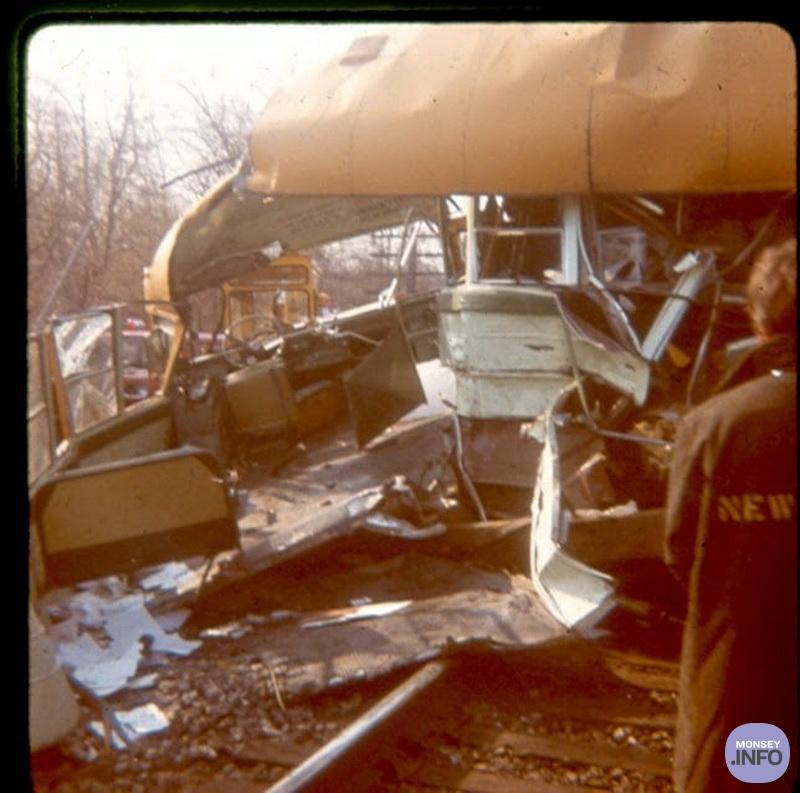
The shock and sadness around the county was palpable, but so was the hope and unity. All around the county and even across the country groups started fundraising efforts to assist the victims. Immediately, tens of thousands were raised and hundreds donated blood. In fact, one person, a Marine from Congers, led his troop of twenty-four soldiers up to give blood. These special volunteers flew from North Carolina by helicopter, landing at the Nyack High School football field across from the hospital to donate blood and visit the students. Letters of support and donations poured in from around the country as the vigils for the victims continued.
Two days after the accident, an interdenominational prayer service was held . Hundreds attended to pray and console one another. The following morning almost 1,000 people attended the funeral service for the first three victims, James McGuiness, Richard Macaylo, and Robert Mauterer at St. Paul’s Church. The officiant was Terrence Cardinal Cooke, the Roman Catholic Archbishop of New York who had changed his Holy Week schedule to be there. Among the pallbearers were fellow students, some of whom had survived the bus crash. The sadness of the funeral was exacerbated when it was announced during the mass that a fourth student, freshman Thomas Grosse, died early that morning at the hospital as a result of his injuries. It would not end there, as on April 12, 1972 the final victim, Steven Ward, died as a result of his injuries. Ward was an only child and had recently decided to apply for admission to West Point. He was said to have worked hard to raise his grades, wrote his letter to the local congressman seeking sponsorship and was on the precipice of acceptance. Altogether, five young men lost their lives and dozens of others were grievously injured, with two losing limbs and all bearing emotional trauma for a lifetime.
In the immediate aftermath of the accident, answers were sought. The National Transportation and Safety Board (NTSB) was on scene for an accident investigation. In painstaking detail the accident was recreated, witness statements taken and details sought. The recreation was covered on the front pages of numerous papers and on television. The investigation concluded that it was driver error. Rockland County District Attorney Robert Meehan convened a Grand Jury, which after hearing evidence, indicted the driver Joseph Larkin. A trial took place in 1973 where Larkin was convicted of five counts of criminally negligent homicide and sentenced to probation and community service. Larkin died in 2000.
A significant number of changes took place as it relates to bus and train safety as a result of this accident. A push for gated crossings occurred all across the state and country and requirements for marking on pavement approaching crossings was put into law. Construction of school buses was examined closely and it was determined that there were many deficiencies that required correction. Among the changes that resulted were mandates that included seat belts, higher seat backs and stronger securing of seats. Many limb and torso injuries resulted from low seat backs and poorly anchored seats. Many other safety features now common on all school buses were contemplated, including roof exits and stronger frame structures. A significant discussion occurred on the number of rivets used on school buses as opposed to commercial buses, and shockingly it was determined that school buses were far flimsier than typical passenger buses used by the public. Changes came quickly with legislation and new safety requirements. All across the country, hearings occurred asking how a tragedy of this nature could be avoided. Numerous states enacted additional changes that undoubtedly saved lives.
Perhaps the greatest change was the 1972 School Bus Safety Act and later amendment in 1974 sponsored by Senator Eugene Levy. This legislation would eventually become the 19A Driver Safety Program in New York State. This program requires mandatory drug testing, driver background checks, in-service safety training and minimum age requirements among other things to insure school bus safety.
On September 16, 1972, the Town of Clarkstown dedicated a plaque here at nearby Congers Memorial Park to honor the five young men lost in the accident. Cardinal Cooke returned just five months after saying the funeral mass for three of the boys, to again offer a blessing and words of comfort as hundreds looked on. Over time life moved forward, students recovered physically, families and the town grieved. While five families lost a son, in a sense every family in the town at least emotionally seemed to have lost a child. Ask any person living here during that point in time and they will tell you about that day and the ensuing painful weeks and months. It is a part of the fabric of our lives that left an indelible mark on the soul of our town.
On this March 24, we gather fifty years since that terrible day. We join together to offer our prayers and to recall five young lives cut far too short and dedicate a new plaque. We also recall with gratitude the bravery of the children who fought to survive. We remember the skillfulness and heroism of so many emergency service workers, police, fire, EMS, doctors, and nurses who answered the call and undoubtedly saved lives and limbs. Finally, we honor those who had the courage and ability to rebuild their lives after tragedy and adversity. The families who lost loved ones, and the injured who despite trauma were able to not only survive but indeed eventually thrive, against all odds. In Clarkstown, we promise to never forget those lost and the bravery of so many on that tragic day.
